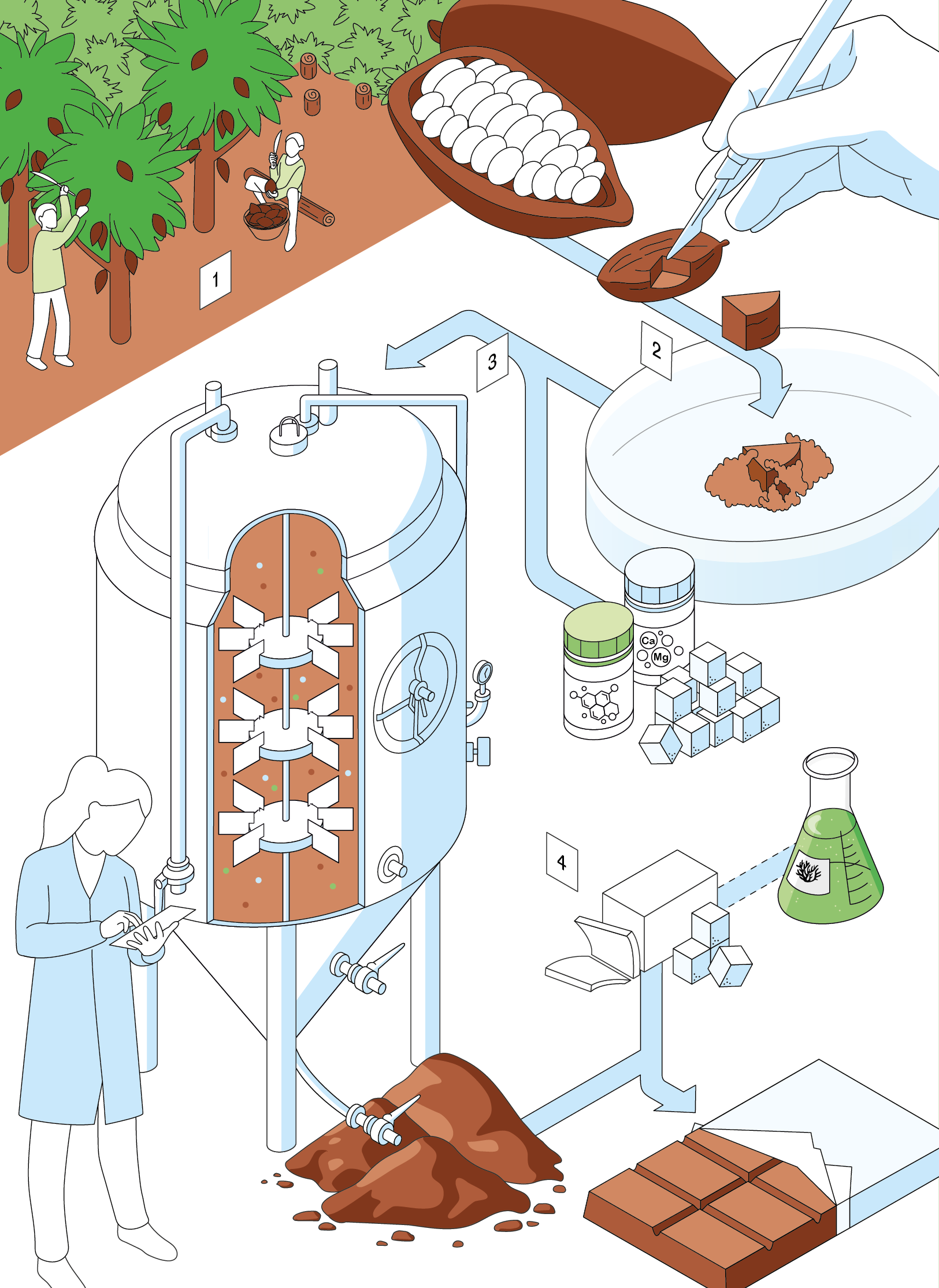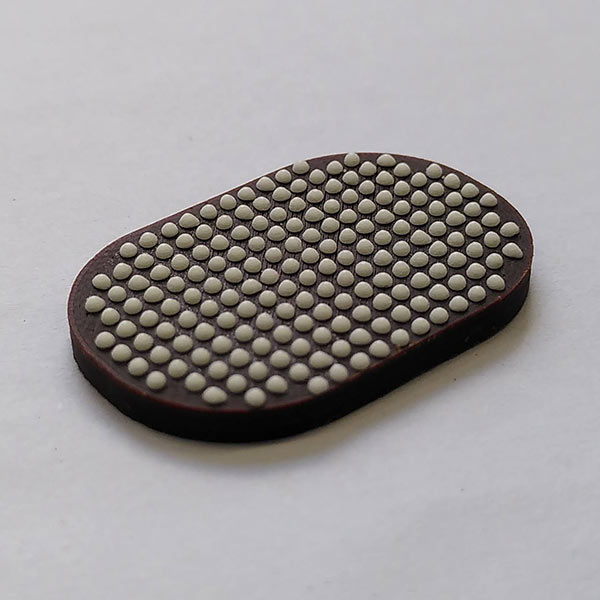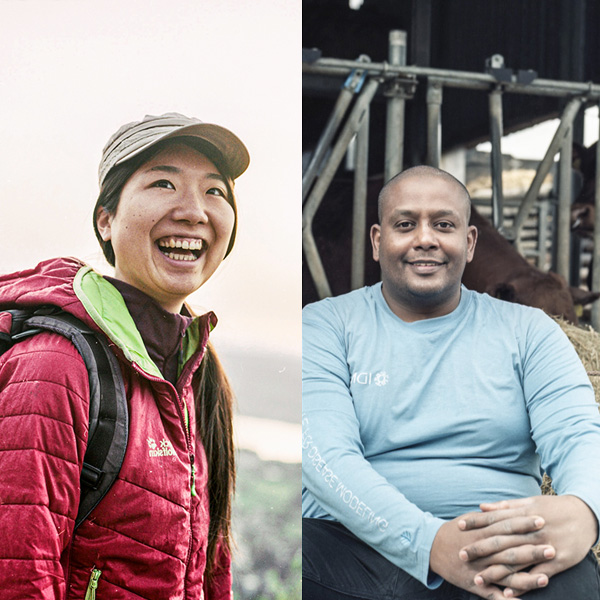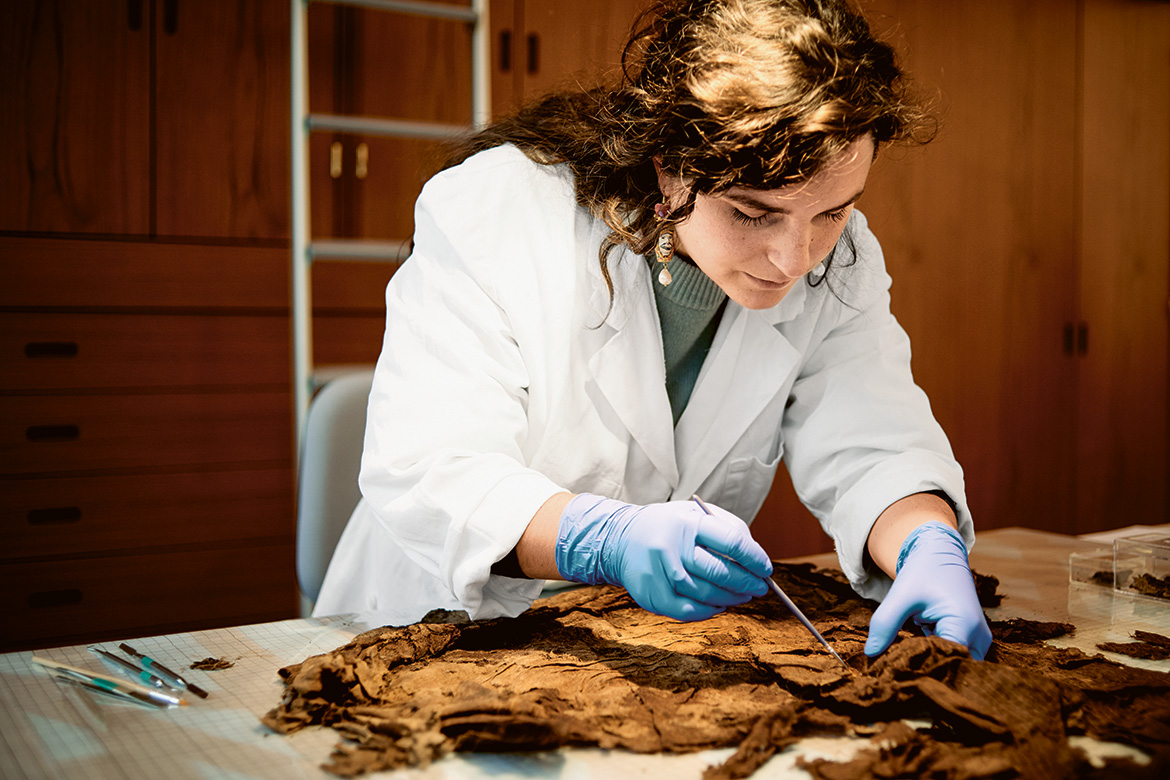
Illustration: ikonaut
4 — What to optimise: raw materials and energy
The biggest challenge is optimising the entire process so that the cocoa produced scores on all points. The raw materials have to be cost-effective, hence the researchers are trying to feed their cells with waste products from the cider and dairy industries. Sugar and cocoa butter have so far been derived from conventional sources, but the start-up is experimenting with microalgae to produce alternative fats. They still have to calculate whether their reduced consumption of land and water will also result in fewer CO2 emissions per chocolate bar.
3 — What to use: the best nutrients
Once they’ve found the right cell line, it can be multiplied an infinite number of times in large bioreactors where it’s fed with sugar, vitamins, minerals and other additives such as plant hormones. The researchers’ aim is to produce as much biomass as possible, as quickly as possible. After four days, the cells are filtered out of the nutrient solution and the material is dried. It’s not necessary to grind or ferment the resultant powder, as it now only needs to be roasted.
2 — What to find: quick cells
The start-up company ‘Food Brewer’, which was founded by researchers from the ZHAW, is on the hunt for cocoa cells that grow quickly. To this end, they cut pieces out of the cocoa bean pulp and use them to cultivate a cluster of cells, which takes a fortnight, on a nutrient gel. AI image analysis helps them to select the right cells.
1 — What to avoid: problematic production
Cultivating cocoa requires a lot of land in tropical countries like Côte d’Ivoire and Brazil. It also consumes a lot of water, transport routes are long, and it often resorts to child labour. In order to satisfy increasing demand, efforts are underway to use cellular agriculture in laboratories to produce cocoa instead.





